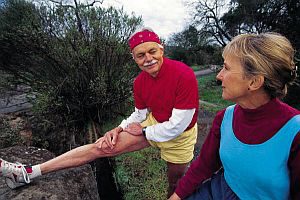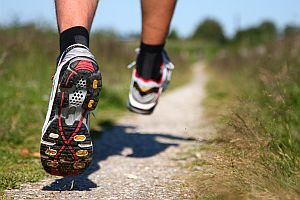Being a Great Fitness Buddy
 Studies have shown that one of the best ways to stick to your fitness regime is to have a reliable fitness partner. Being a fitness buddy means that someone else is counting on you to make them accountable for their workout, keep them inspired and ensure that they are not alone in their quest for fitness. To be a great fitness buddy you just need to keep a few basic guidelines in mind:
Studies have shown that one of the best ways to stick to your fitness regime is to have a reliable fitness partner. Being a fitness buddy means that someone else is counting on you to make them accountable for their workout, keep them inspired and ensure that they are not alone in their quest for fitness. To be a great fitness buddy you just need to keep a few basic guidelines in mind:
You should both have similar goals – If you are training for a place on the Olympic team and your fitness buddy just wants the occasional weekend workout, neither of you is likely to meet your goal. This does not mean that you have to share the same goal, but they should be relatively comparable. That way, you can encourage your partner to meet their goal while not losing sight of your own.
Find someone at a similar fitness level – Your fitness partner does not want to feel like they are being left behind if you are at a much higher level than they are. Similarly, choosing someone at a higher level may make them feel like they have to hold back. Having the same starting point is more motivating for you both.
Be reliable – Always show up when you say you are going to. Your fitness buddy will be more motivated knowing that he or she can count on you to be there for a scheduled workout. You should ideally have similar schedules so that your partner does not have to work around your previous commitments.
Don’t hesitate to push your partner – It’s natural to want to do as little work as possible to reach our goals. But encouraging your fitness buddy to push themselves a little farther than they might on their own can help them to reach their goals a little faster. Never push them beyond what they can safely do, but there is no harm in encouraging your partner to push beyond what they perceive are their limits, and they will be pleasantly surprised at how much they can accomplish that they never thought they could.
Keep focused – Help your partner to keep focused on his or her workout by ensuring that your mind does not wander off or become distracted by the cute guy or girl walking by in the gym.
Provide useful criticism – Do not hesitate to correct your workout partner if you feel he or she is using bad form or doing something unsafe. Part of the responsibility of being a great fitness buddy is ensuring that your fitness partner does not become injured during their workout and that they perform to the best of their ability.
